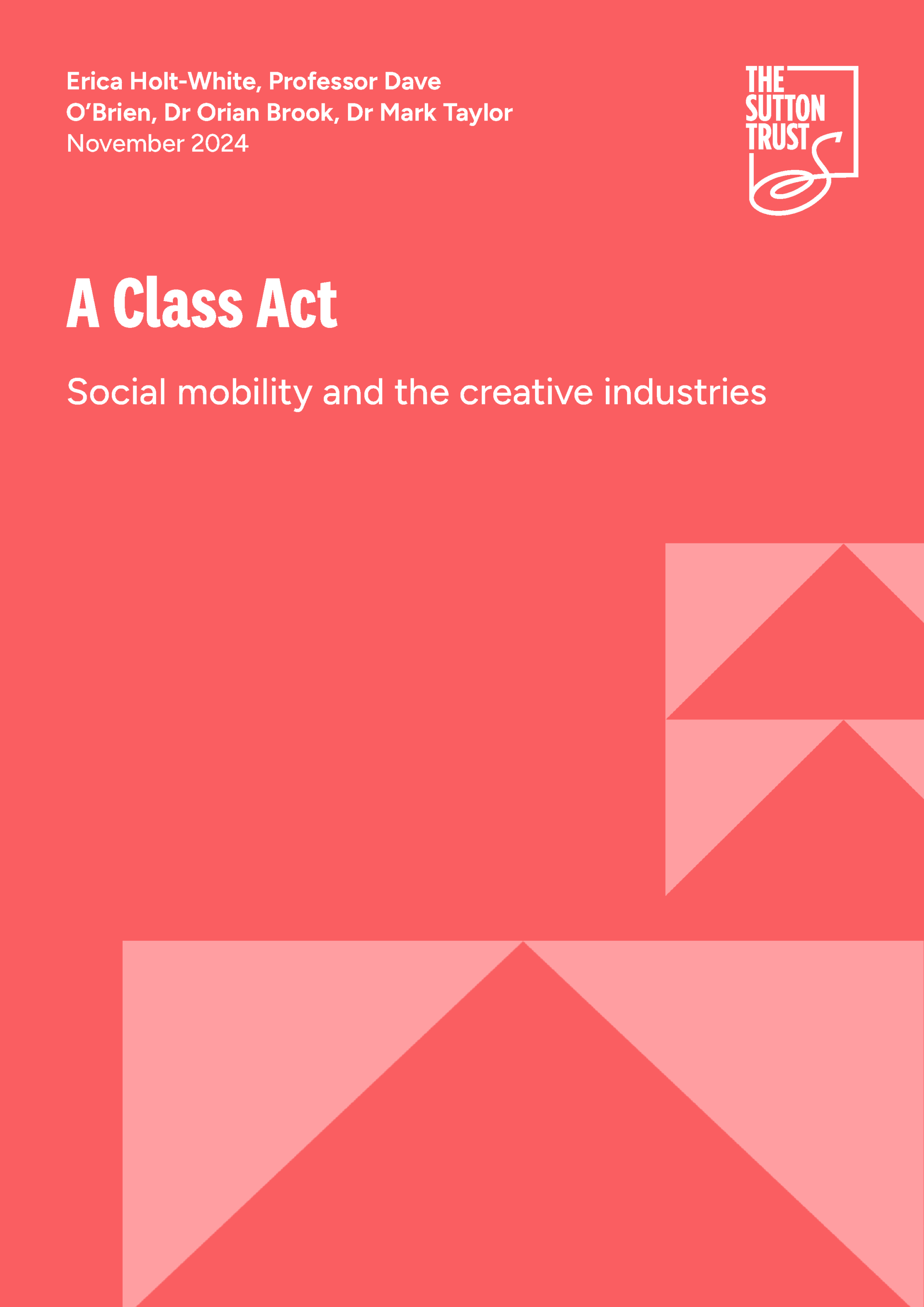From acting in an award-winning film to producing a number one album, getting to the top of the creative industries is a dream for many young people. But access to such careers, both behind the scenes and in front of an audience, is currently far from equal. For young people from lower socio-economic backgrounds in particular, there are major barriers.
And who can access these careers really does matter. Art plays a vital role in shaping the society we live in. When those from better-off backgrounds dominate the creative industries, it is their stories and ideas that we all see told through TV shows, films, plays, music or dance. The world is shown back to us through their lens, with an impact on the cultural and social life of the country. These positions are also highly sought after, giving those with a creative flair an outlet for their passions and talents. But for young people from poorer homes, the domination of the creative industries by the better-off can make these fields seem ‘elitist’ and out of reach.
At a time of change in the sector, as well as in the wider political landscape, this report is the first by the Sutton Trust to look in detail at access to the creative industries. It includes new analysis of Labour Force Survey (LFS) and Higher Education Statistical Agency (HESA) data from academics Professor David O’Brien, Dr Orian Brook and Dr Mark Taylor on social mobility within creative higher education courses, alongside work carried out by researchers at the Sutton Trust, looking at the educational backgrounds of elite and ‘high-profile’ figures in television, film and music.
